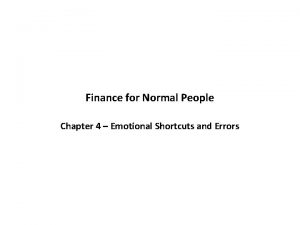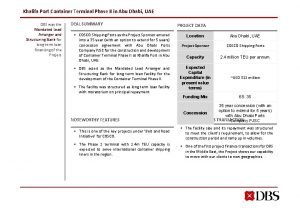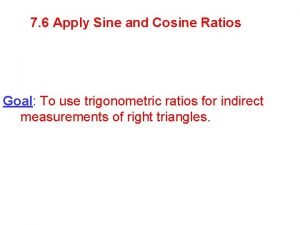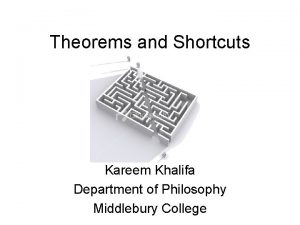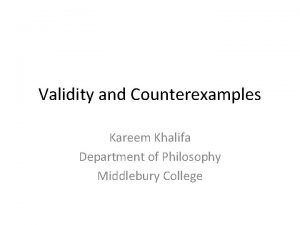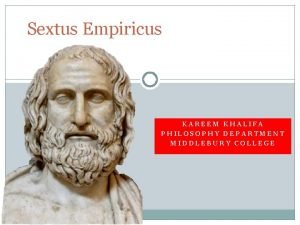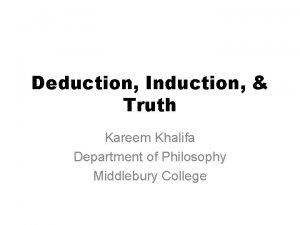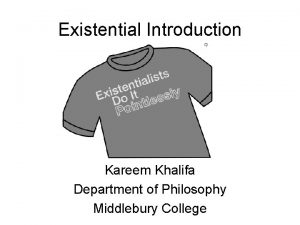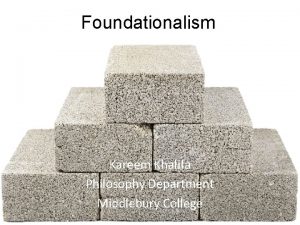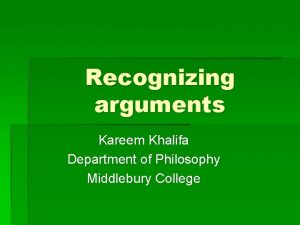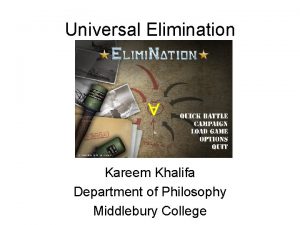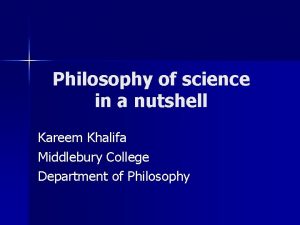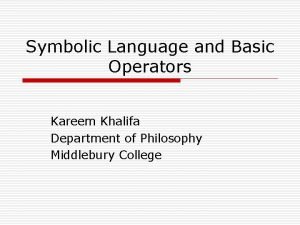Theorems and Shortcuts Kareem Khalifa Department of Philosophy














- Slides: 14

Theorems and Shortcuts Kareem Khalifa Department of Philosophy Middlebury College

Overview • • Why this matters Theorems Shortcuts Sample Exercises

Why this matters • Shortcuts are shortcuts. – They often decrease the length and difficulty of proofs. • Shortcuts (derived rules) provide us with a number of natural patterns of reasoning, e. g. , disjunctive syllogism, modus tollens, etc. • Shortcuts give us more moves to use. – This means that it’s harder to get stuck, but easier to get lost.

Theorems • A tautology – Any argument that can be proven valid without any premises. • We represent this as “├ p” • Essentially, this says, “regardless of what the premises are, p will be true”

Example • ├ P (P v Q) • How do we prove this? 1. |P H for I 2. |Pv. Q 1 v. I 3. P (Pv. Q) 1, 2 I

Shortcuts/Derived Rules • The 10 basic rules suffice to prove any valid inference. • However, it’s often a pain to prove even very intuitive inferences. • So, we use derived rules (Nolt, 105 -106) to make our lives easier. – For example…

4. 3. 7 ~P & ~Q ├ ~(P v Q) DM Without Shortcut 1. ~P & ~Q 2. |Pv. Q 3. | |P 4. | | 5. | | 6. | | 7. | |Q 8. | P →Q 9. | |Q 10. | Q→Q 11. |Q 12. | ~Q 13. | Q & ~Q 14. ~(P v Q) |~Q | ~P | P & ~P A H for ~I H for→I H for ~I 1 &E 3, 5 &I 4 -6 ~I 3 -7 →I H for→I 9 -9 →I 2, 8, 10 v. E 1 &E 11, 12 &I 2 -13 ~I

4. 3. 7 With Shortcut 1. ~P & ~Q 2. ~(P v Q) A 1, DM

Sample Exercise 4. 4. 3 ├ P ~~P 1. |P 2. | ~~P 3. P ~~P H for I 1, DN 1 -2 I

4. 3. 10 1. ~~P v ~~Q Pv. Q 2. ~(~P & ~Q) 3. P v Q A 1, DM 2, DM

4. 4. 2. 6 • ├ ~(P v Q) ~P 1. |~(P v Q) 2. |~P & ~Q 3. | ~P 4. ~(P v Q) ~P H for I 1 DM 2 &E 1 -3 I

From Copi & Cohen 1. (E&F) v (G H) 2. I G 3. ~(E&F) I H 4. G H 5. I H A A A 1, 3 DS 2, 4 HS

More from C&C 1. Q (Rv. S) 2. (T&U) R 3. (Rv. S) (T&U) Q R 4. Q (T&U) 5. Q R A A A 1, 3 HS 2, 4 HS

More C&C 1. 2. 3. 4. 5. A v (B A) ~A&C ~B ~A B A ~B A A 2 &E 1, 3 DS 3, 4 MT





